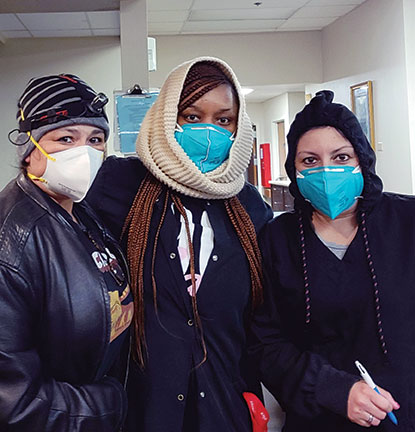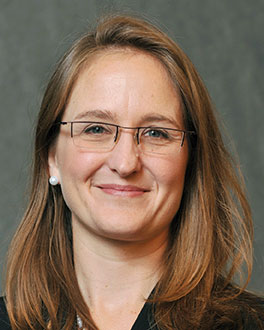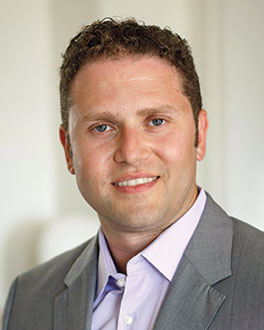 Skilled nursing and assisted living providers have found that fighting COVID-19 has only underscored the importance of a positive company culture.
Skilled nursing and assisted living providers have found that fighting COVID-19 has only underscored the importance of a positive company culture.
“The pandemic uncovered that we don’t always have a mutually supportive and reinforcing culture in nursing homes,” says Alice Bonner, PhD, RN, FAAN, senior advisor for aging, Institute for Healthcare Improvement.
“We have webinars and other programs telling people that we have to do better, but that’s not enough and not always the best approach.” She stresses the need to develop tools and resources to create and sustain a positive culture.
Then, she says, “We need to figure out how to get these into 15,600 nursing homes.”
What Works
During the pandemic when everyone was overwhelmed and staff were stretched thin, “The whole premise of our culture is that we treat everyone with respect and dignity,” says Paul Gerharter, RN, vice president of clinical services for Caraday Healthcare. “We make it clear that it’s okay to talk about family and life away from work.”
When staff feel like their managers understand what they’re going through and are empathetic, they are more likely to be engaged and embrace the organization’s vision. “It’s important for everyone to understand there will be bad days,” Gerharter adds. “We need to own up to mistakes, forgive people, learn, and move forward.”
 One thing that has been crystal clear during the pandemic is, “You have to set up a culture of safety before a crisis hits,” says Dallas Nelson, MD, CMD, associate professor of medicine at the University of Rochester School of Medicine and Dentistry. “You need a system that shows you value employees, that they can bring up questions, fears, and concerns and be respected.”
One thing that has been crystal clear during the pandemic is, “You have to set up a culture of safety before a crisis hits,” says Dallas Nelson, MD, CMD, associate professor of medicine at the University of Rochester School of Medicine and Dentistry. “You need a system that shows you value employees, that they can bring up questions, fears, and concerns and be respected.”
She suggests that when this culture doesn’t exist, trust can suffer, and staff are hesitant to believe management has their best interests at heart. “You have to make staff feel safe before they can make other people feel safe,” she says.
In a culture of safety and trust, it is much more difficult for conspiracy theories, rumors, and misinformation to gain traction. This certainly doesn’t mean that management is always right or that leadership has all the answers.
“The idea that good leadership doesn’t change its mind is terrible,” Nelson says. “Changing course after new data come out isn’t a sign of weakness; it shows that leadership wants to do what is right for residents and staff. If you act like you know what you don’t know, you will lose trust, and people won’t trust you to keep them safe.”
“Those homes that have really transformed their culture to be more resident-centered and resident-directed had systems in place that helped them during the pandemic,” says Penny Cook, MSW, president and chief executive officer of the Pioneer Network. As a result of their cultures, they already had consistent staffing, effective ways to interact with families, and other elements that promoted engagement, transparency, teamwork, and empathy.
What Can Help
Culture change continues to be a significant opportunity for facilities, and it can be a “massive endeavor,” says Anna Fisher, DHA, CMDCP, CDP, director of quality and education for Hillcrest Health Services. However, it can be managed with the right tools, resources, guidance, education, and, of course, people.
For example, she says, “We were part of a pilot for the Artifacts of Culture Change 2.0, designed to help make a shift in culture and affect positive change.” Offered by the Pioneer Network, Artifacts is an internal implementation, inspiration, and self-assessment tool that shows assisted living and nursing homes a variety of beneficial changes they can make to increase resident autonomy, rights, and choice, as well as note their progress toward changing institutional culture. For more information, go to www.pioneernetwork.net/artifacts-culture-change.
More than ever, making sure residents are part of culture change is key, Cook says. “I’ve talked to some communities during the pandemic where staff said relationships with residents helped them through it all.”
This power of reciprocal learning needs to be promoted more. For instance, Cook shares the story about how her 25-year-old son was stressed and exhausted, and a conversation with his grandmother boosted his spirits tremendously. “If residents know they have cheered up a staff member or made someone laugh or smile, that gives them a sense of purpose. We all need that,” she says.
The Bright Way Forward
 Even though the business of post-acute and long term care is serious, there is a place for humor. “Humor is a huge part of our day-to-day life,” says Gerharter. “When we have our weekly calls, we laugh. We are in a serious business, but we want people to feel at ease.”
Even though the business of post-acute and long term care is serious, there is a place for humor. “Humor is a huge part of our day-to-day life,” says Gerharter. “When we have our weekly calls, we laugh. We are in a serious business, but we want people to feel at ease.”
“We were at a low point prior to the vaccine,” says Steven Buslovich, MD, CMD, MSHCPM, a New York-based geriatrician. “Now I am seeing a lot more optimism and the vaccine changing our way of life. This is exciting. If we continue moving forward where everyone follows a plan, that is the best path to ‘normalcy.’ The virus will be around indefinitely, but we will have a new normal way of life, and we have learned much that will ensure the best possible teamwork moving forward.”
The pandemic has shone a light on areas of opportunity in the system, suggests Fisher, and providers need to use this information to refine their processes and create ways to continue dialogues they’ve started with other stakeholders.
“You can look at our current situation as the glass half-full or half-empty. Yes, the pandemic has spotlighted issues within the system that need to be addressed, but people should celebrate all of the remarkable things they’ve accomplished this past year.”
In the meantime, “You have to stay resilient, and some things you just have to let roll off your back,” says Jeffreys Barrett, RN, MHA, NHA, executive director of Wellsprings of Gilbert in Arizona. “We have to prioritize more than ever before, and as leaders, we need to let other leaders do their jobs.”
Joanne Kaldy is a freelance writer and communications consultant based in Harrisburg, Pa.